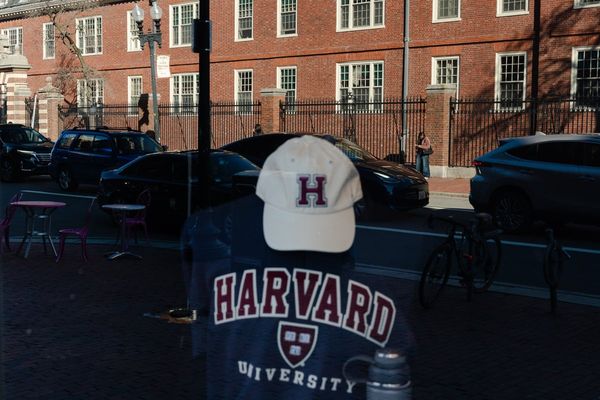
Scores of poultry operations in the US have been reinfected by bird flu since 2022, costing hundreds of millions of dollars in federal payouts, according to documents obtained by the Guardian.
The recurring outbreaks highlight the need for more aggressive prevention, including poultry vaccination and changes to how poultry is farmed, experts say.
At least 56 poultry operations, including chicken and turkey farms, in the US have been infected twice by bird flu, according to depopulation and reinfection records from the US Department of Agriculture (USDA).
Another 17 poultry farms have had three rounds of infections. More than half – 11 – of these farms are located in South Dakota. The others are located in Minnesota, Colorado and North Dakota. The US government payout estimate is more than $75m to these farms.
Yet another six farms have experienced four outbreaks of H5N1, the documents show. All of these farms are located in South Dakota, and they have received an estimated $23m in payments.
A spokesperson for the USDA told the Guardian that 67 commercial poultry operations had been reinfected at least once, with 18 farms infected three or more times.
Farms with reinfections have received more than $365m in federal payments, the USDA announced while unveiling a plan to require a biosecurity audit before farms receive more indemnity payments.
The USDA has paid more than $1.1bn to more than 1,200 poultry producers for culling and replacing their flocks.
Average US egg prices hit a record high of $5.90 a dozen in February, according to consumer price data.
The USDA says egg prices could rise another 41% this year. At the same time, egg producers have posted record profits.
The Trump administration recently unveiled a new plan to battle this current outbreak, which has sickened 70 Americans and killed one person in Louisiana.
The $1bn plan focuses on improving biosecurity, including free biosecurity audits and reducing regulations. It also invests $100m in potential treatments and vaccines, and it increases payouts for farms that cull infected flocks.
Biosecurity in poultry farming often involves sanitizing equipment, vehicles and facilities, as well as restricting the number of people who can access chicken houses and testing animals.
But experts say more changes to how birds are raised could make outbreaks less common.
Large, densely packed facilities make outbreaks harder to contain, but smaller operations could reduce the risks of outbreaks.
Sharing workers across poultry operations may also be spreading the virus, said Matthew Hayek, assistant professor of environmental studies at New York University.
The workers are “moving in between the houses, checking up on the hens, depopulating and repopulating the flocks, administering more feed. So it’s often the case that when an operation gets infected, that it’s not just one of their barns, it’s often two or more,” Hayek said.
While biosecurity can help reduce outbreaks, “it seems like biosecurity measures alone are not enough to prevent the spread of this virus”, said Khaled Abdelaziz, assistant professor of animal and veterinary sciences at Clemson University.
“We need to reconsider vaccinating our poultry flocks to minimize the production losses and prevent potential pandemics,” Abdelaziz said.
It is important to take aggressive action now before the virus mutates to become transmissible among people, Abdelaziz added.
“If it transmits from humans to humans, it will be more catastrophic than the coronavirus” pandemic, he said.
Egg-laying hens live longer than birds raised for their meat, known as broilers. While broilers live about eight weeks, hens may lay eggs for three or four years. When they are culled, it can take five or six months before the new birds start laying eggs.
That means vaccinating hens could prevent some of the egg shortages and high prices now being seen across the US.
“As long as we’re eating eggs in this present and future bird flu situation, vaccinations have to be a part of that answer,” Hayek said.
Egg prices are up because of shortages “and because companies are noticing a higher consumer willingness to pay when they see occasional interruptions”, Hayek said. “In order for prices to come down, we don’t just need to increase the supply, but the supply needs to get more reliable.”
The main challenge to vaccination isn’t the cost of the vaccines themselves, Abdelaziz said. Vaccinated birds need to be tested to make sure they are not infected asymptomatically, and there are limitations on exporting meat and eggs from vaccinated chickens.
But “nowadays, with technology – we can overcome this”, Abdelaziz said. That includes tests that distinguish between antibodies from infections versus vaccination.
The administration could also incentivize producers to use more humane and quicker depopulation methods, said Allie Granger, a policy adviser at the Animal Welfare Institute.
“We continue to reimburse producers over and over again for infections that occur,” Granger said. “Around half repeatedly used ventilation shutdown plus heat to depopulate their animals” – a method she called “one of the most horrific”.
The US could also help embattled poultry producers move into new forms of agriculture like growing beans or mushrooms, Hayek said.
“The incentives are going in the wrong direction,” said Hayek. Farmers’ “only option to get paid for the flocks that they’ve lost is to repopulate that flock”. That means “farms are continuing to go back to the well” in order to recoup their losses.







